We who live in Minnesota are the lucky few to be near a place of true wilderness. It is the Boundary Waters Canoe Area Wilderness – the BWCAW – more simply called The Boundary Waters. Those of you who know me also know it is one of my favorite places to go in Minnesota. It is a special place for me.
“Gateway to the Wilderness” Is the literal name; the Ojibwe called it “Mesabi” and it has had other names as the years have passed.
“The Land of Sky Blue Waters” was what the Hamm’s Brewing Co called this water from which they said their beer was brewed saying it was the coldest, cleanest water. Hamm’s Brewing was in St. Paul and I doubt they traveled to the BWCAW to get the water, but undoubtedly, it helped with sales of the popular brew!
The Boundary Waters area could most accurately be called the “Incredibly Rocky Place” as there is more rock than trees or water. That said there are lots of trees including spruce, oak, tamarack, birch and aspen to name the trees I have seen there.
And lots of water too for the glaciers carved more than 1000 lakes in the Boundary Waters some 170,000 years ago. It carved those lakes right down to the bedrock making it truly a rocky place. Some lakes are large and some small. There are islands, bays, arms, peninsulas, rock cliffs, outcrops, waterfalls and miles of interesting shorelines.

Preservation of the BWCAW did not come easily. It was a long and arduous journey fraught with difficulties. You may have read books by Sigurd Olson or Ernest Oberholtzer. They were among the men who lobbied, endured financial hardship and personal threats to stave off industry, to educate the people of Minnesota about the value of this land, and to warn the government of the bleakness of a future without wilderness.
I am currently reading an interesting book titled Shelter written by Sarah Stonich, who is from Ely and Tower. – both small towns in Northern Minnesota. She fills the text with information about the Boundary Waters, history of the area and lots of humor. She purchased a piece of land near the Boundary Waters and tells of her experiences trying to deal with the rock in building a small cabin. She had quite a challenge, but her persistence is admirable.
Though I am familiar with some of the history of the Boundary Waters, I have gleaned additional information from Sarah’s book. She has a unique way of writing with a sense of humor where I find myself laughing out loud as i read. Can hardly put the book down and go to sleep!! It is that good. I highly recommend it. I included snippets from her book in this blog to aid in helping you understand what an unusual, special place the Boundary Waters is, and how lucky we are to have it here in Minnesota.
At times, my companions canoeing in the Boundary Waters are my oldest son, Mike, my sister, Katy, and my younger brother, Norbert, who travels from his home on the East Coast to camp with us in the wilderness. As hard as we have tried, we have been unable to get our older brother, Frank, to join us in this adventure.
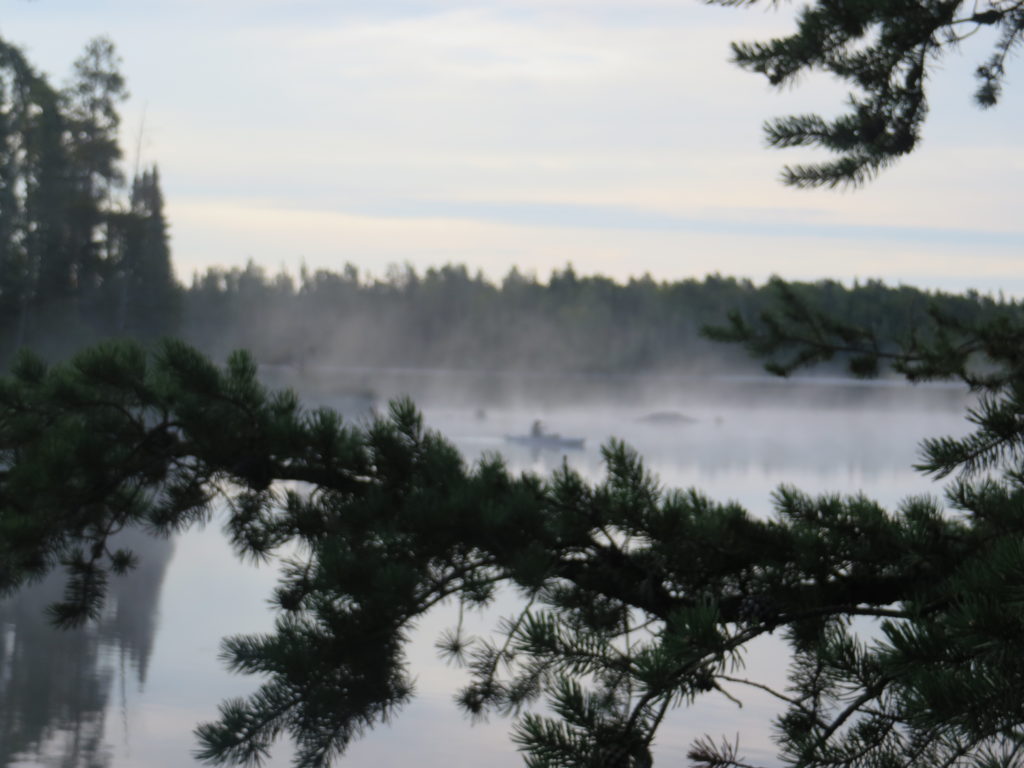
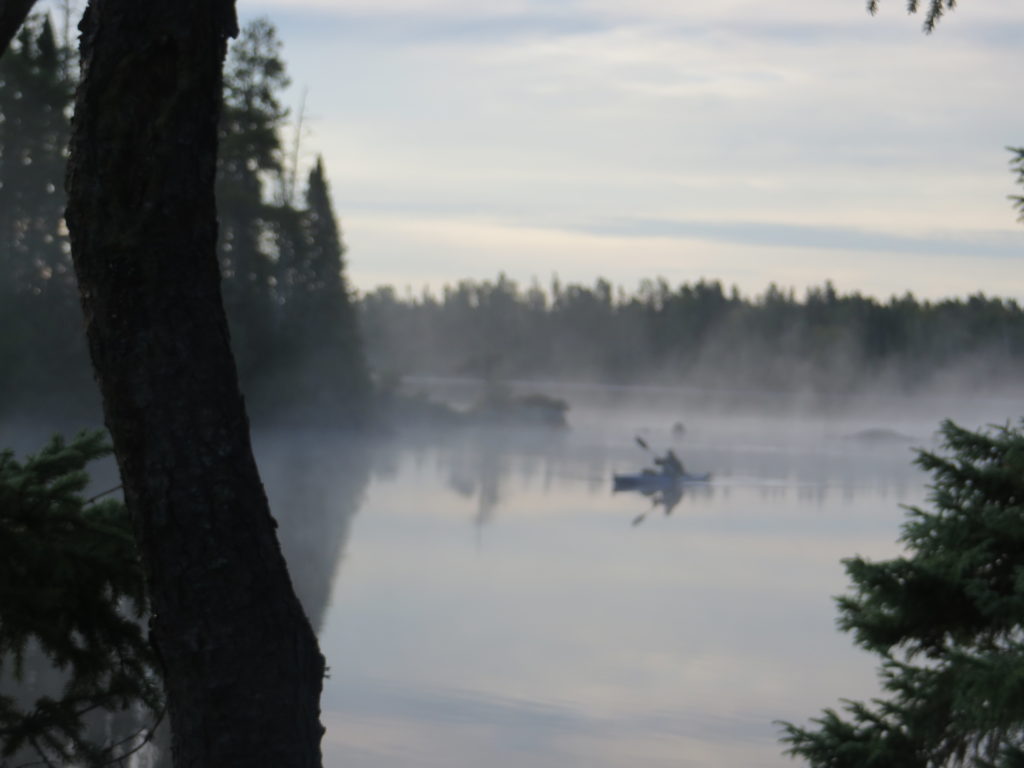


I have introduced you to the author of Shelter, Sarah Stonich, who writes about her father. She writes that he “had flown during WWII as an officer in the Army Air Force, a navigator on bombing missions with targets in the Asian Pacific.” (God bless him for his service to the people of the United States of America to keep us free.) After his military service, he was a guide taking wilderness enthusiasts camping in the rocky Boundary Waters. Sarah describes the hardships her father endured portaging from lake-to-lake lugging heavy packs of gear, hauling canoes of wood, toting heavy canvas tents, carrying days of food in steel cans, and schelping wooden oak folding cots for sleeping. Portages from one lake to another were rough, uneven and rocky. Sarah talks about a photo of her father in her family archives “posing next to waist-high tonnage of camp gear, tan faced and bright eyed, with khakis tucked into knee-high, Mountie-style boots smiling at something beyond the camera, looking happy at home, and utterly exhausted.” Conditions have changed. Guiding is still a difficult job, but with new lightweight Kevlar canoes, more traveled trails connecting one lake to another and freeze-dried meals, it is somewhat easier for wilderness guides.
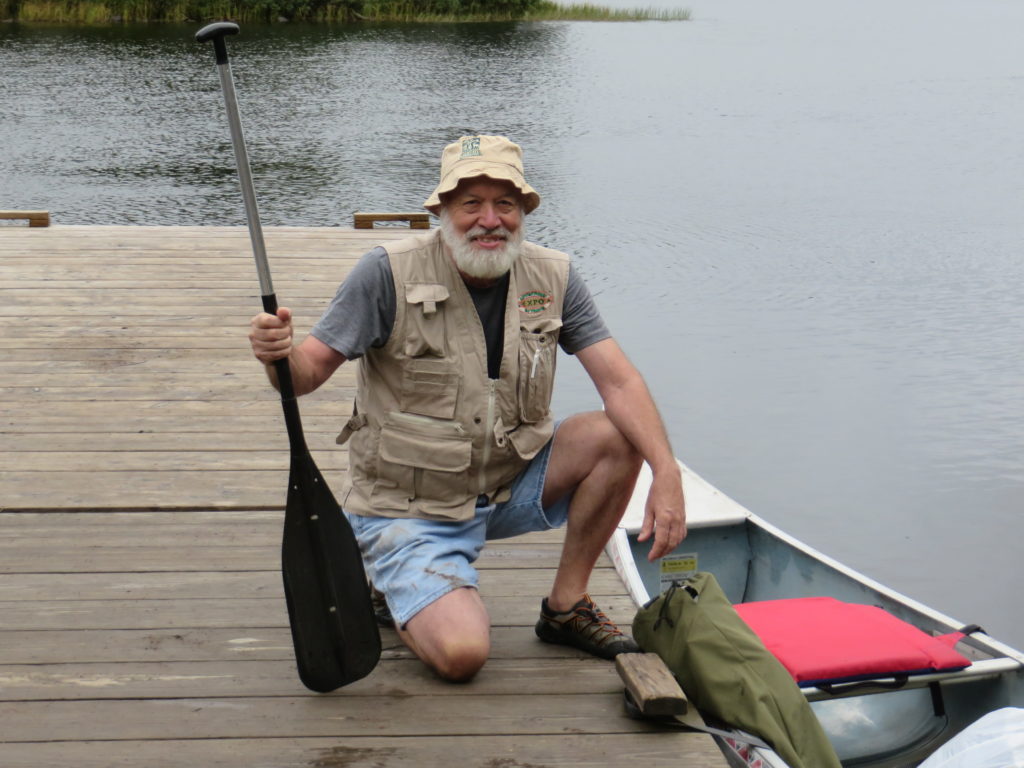
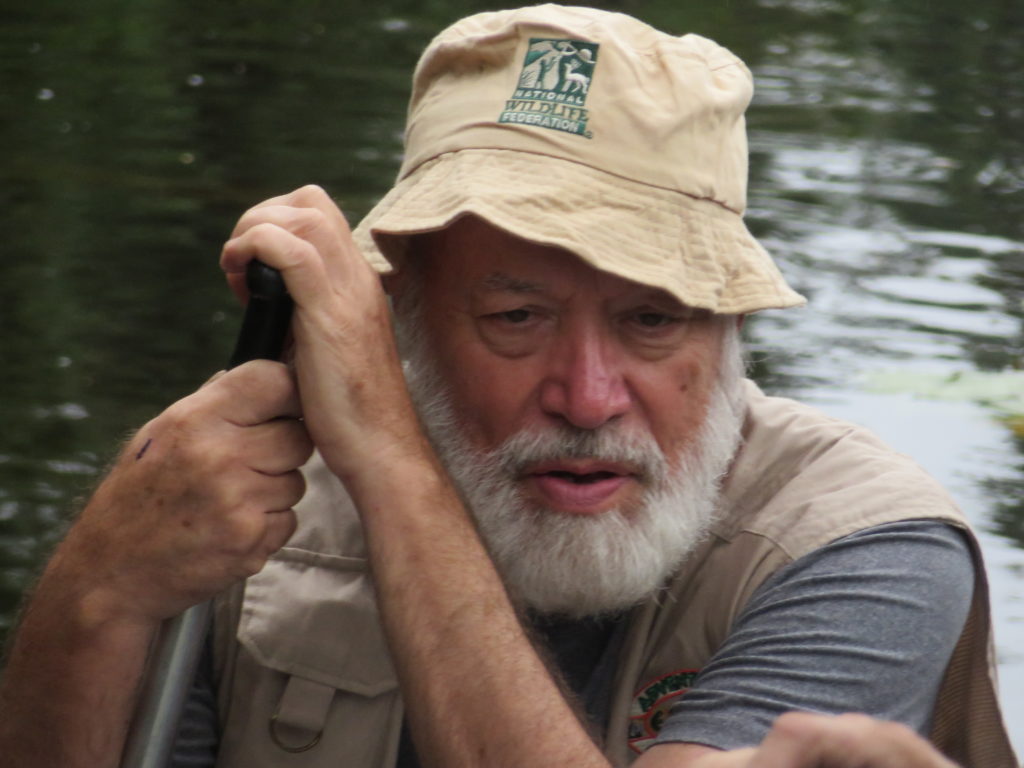
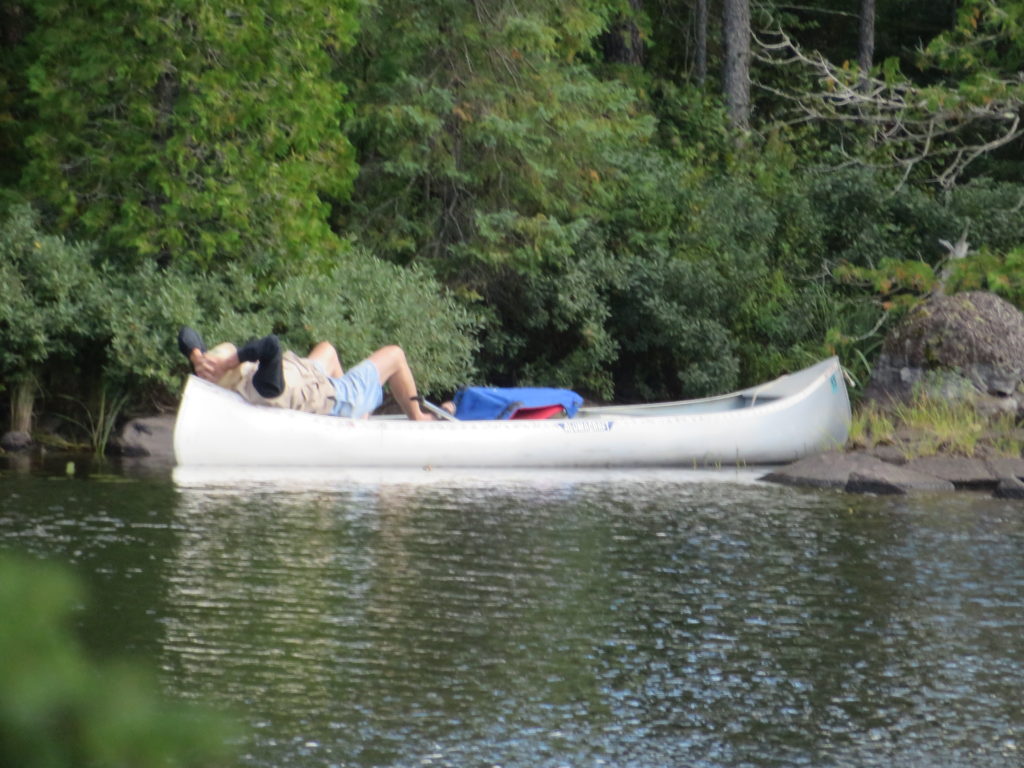
My sister, Katy, sitting on a fallen tree, listening to the wilderness sounds. Places to sit are all hard…..on this kind of a log, a rock, a canoe seat or on the bottom inside of one’s tent. That is about it and they are all hard. It is good to have camp chairs or a pillow.
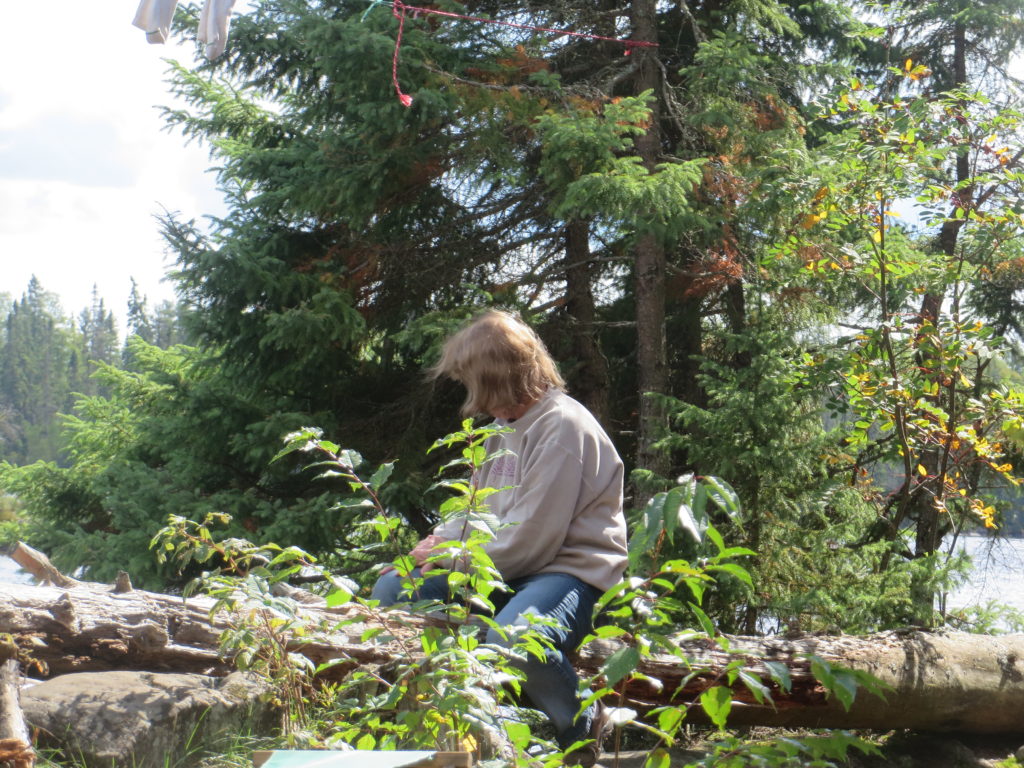
Sarah Stonich puts in her book that no part of this book “may be used or reproduced in any manner whatsoever without written consent, except in the case of brief quotations embodied in critical articles and reviews.” I don’t know if my use of some of her writing in this blog qualifies under articles and reviews or not, but I will take my chances!! I’m sure she won’t mind.
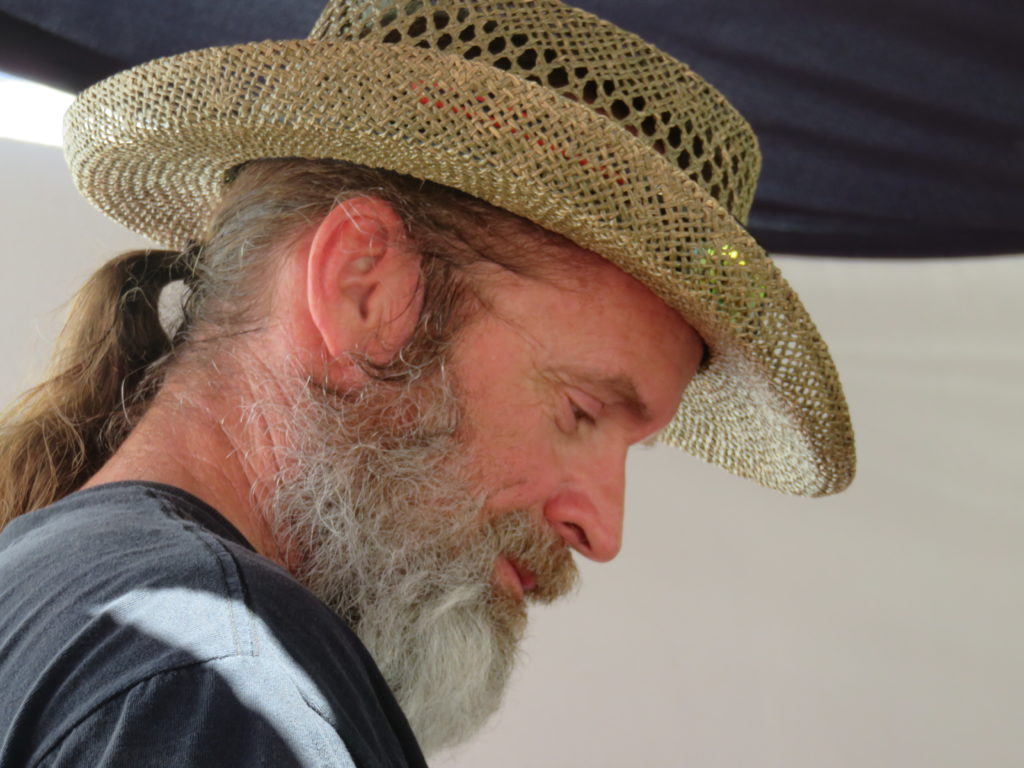
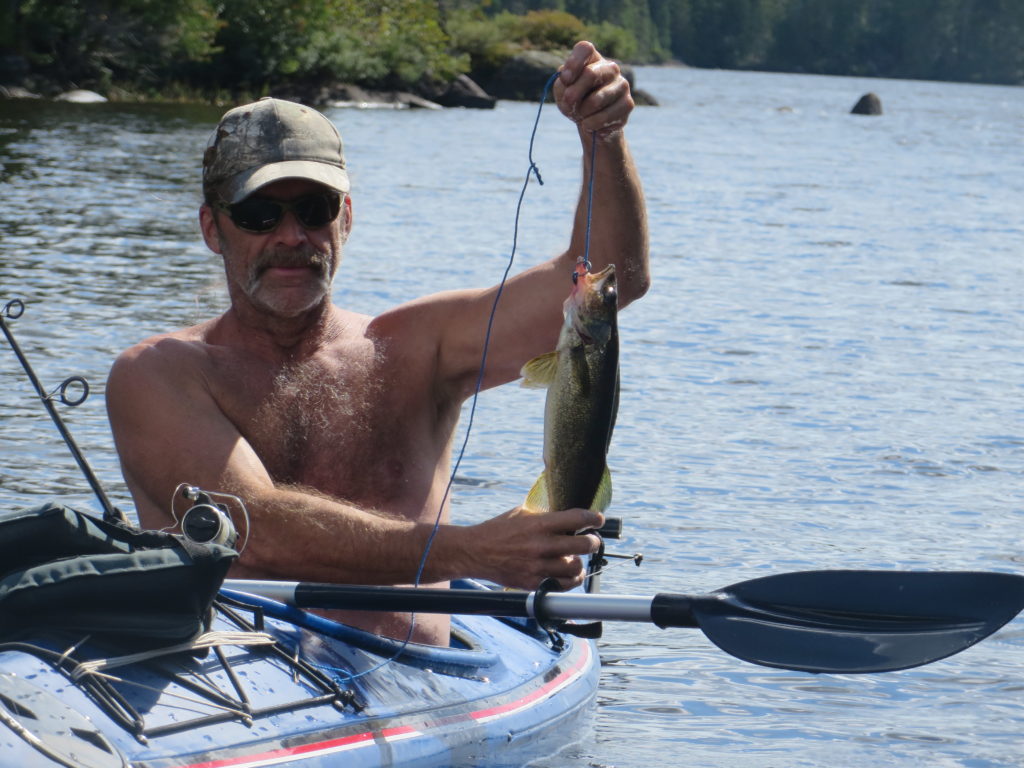
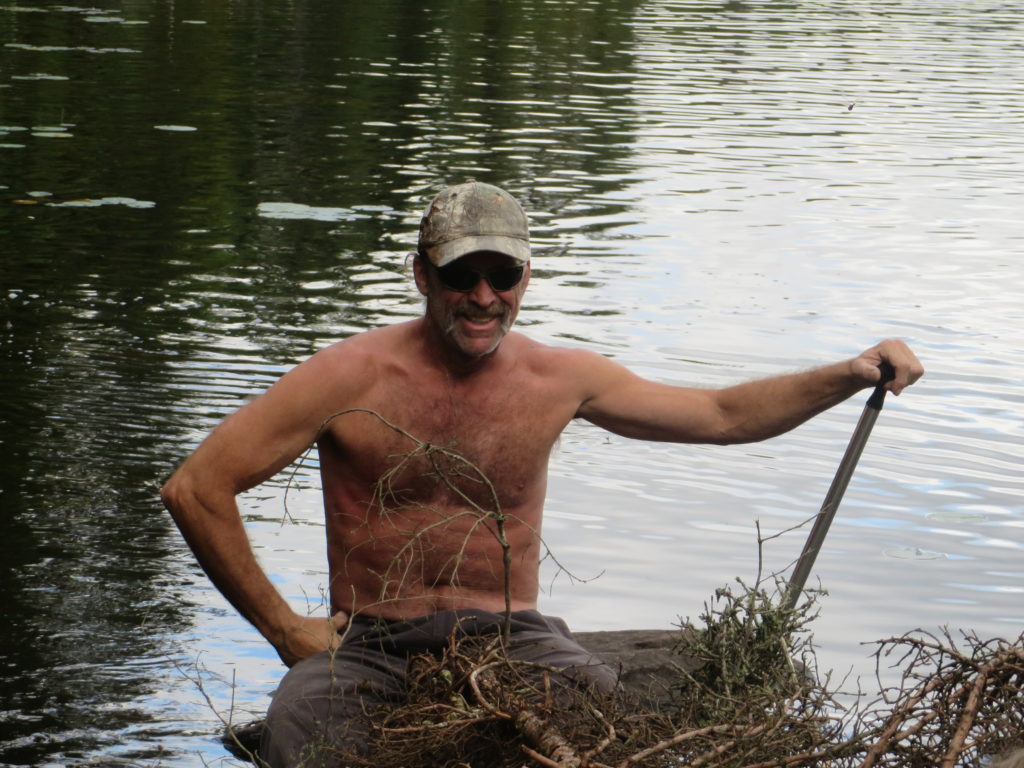

Here I am in the water. And it was delightful. I thought about the otters because when we cleaned the fish, we threw the guts into the water and those otters were there in no time for their supper. I hoped they knew the difference!!

Ooh, that photo is a little blurry. Maybe one of us was moving! It is the Common Loon, Minnesota’s State Bird. It is plastered on everything from murals painted on garage doors, coffee mugs, printed on millions of lottery tickets, photographed, carved and painted. The bird is loved by all, but there is another side to this creature…..it is probably the most viscous state bird in the US. It cannibalizes other waterfowl by spearing upward other baby ducks as its favorite meal. It can swim about a quarter of a mile underwater so can silently approach unsuspecting waterfowl. It also eats frogs and large water insects and can dive 200 feet to forage for food. Their nests float on the water and they carry their young on their backs until old enough to swim alongside. They do not winter in Minnesota, but leave our lakes when the weather turns cold. I was canoeing one time when a loon popped up right beside the canoe scaring the beegeebees (don’t ask, I have just heard the expression) out of me as it is such a surprise. The loon seemed not to be surprised at all.
Their feathers are black with white spots and their eyes are red. It is thought the red eye helps them see underwater. Their tremolo call is eerie and mostly heard at night when they are defending their territory or mating. They are large… between the size of a duck and a goose. Despite their reputation as a bad bird, I love to hear them at night when I am in my tent.
Our outdoor toilet is just a short distance from camp. It is prudent to be aware of one’s surroundings when venturing to this place. I am always aware of noises in the bushes and spiders though most of it is my imagination. Sarah Stonich wrote this little poem for her outhouse…..”Real men pee outside like hairy old Sasquatch does. Are you afraid to? Lions and tigers and bears and mice. Please cover the toilet paper. Please, nothing but pee, poo and TP down the hole. This loo does not flush.” That says it all, Sarah. (Sorry, but I had to put the photo of the toilet at the end of this blog because it refused to go with this text!)
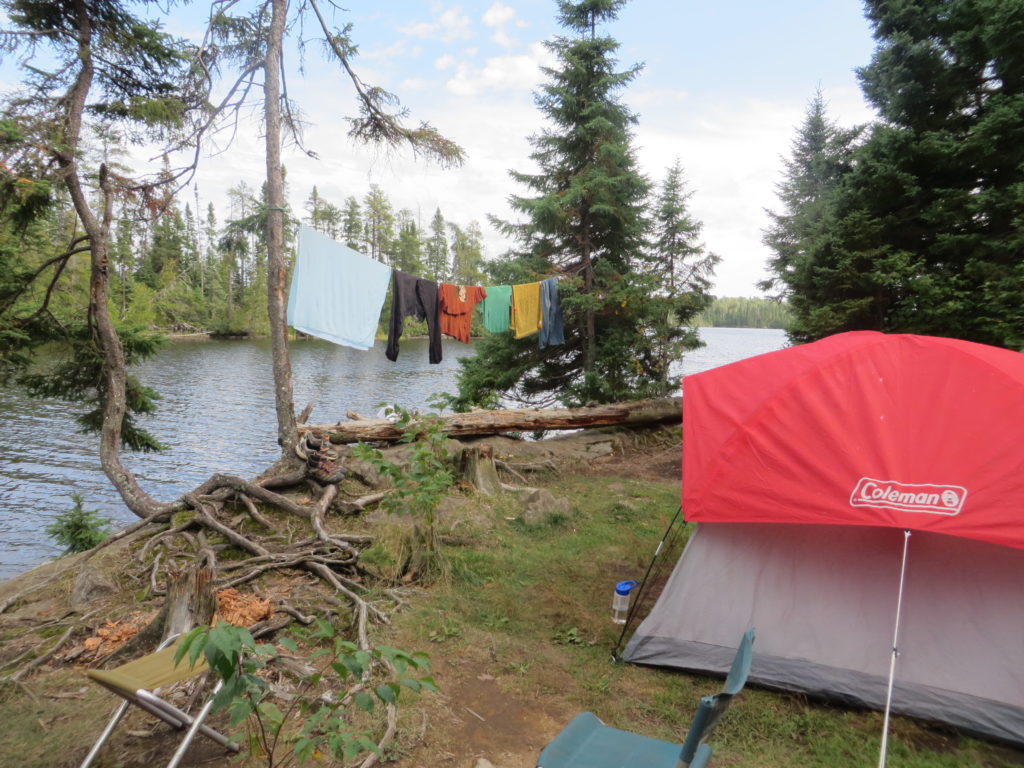
One might think of the wilderness as being quiet and silent, but not so. It is really a very noisy place. If we are near a bog in springtime, the frogs are croaking seemingly endlessly at night, and in the last of warm summer nights, crickets are chirping like crazy. All manner of other insects are squeaking, clicking, buzzing and just plain noisy.
They fly into your tent, your ears and crawl into your sleeping bag. It seems one is alway swatting and chasing some creature. Clouds of insects hover over the water making a whooshing sound, fish and minnows are jumping for a meal or maybe just showing-off to one another. There are woodticks, black flies and tons of mosquitos depending on what insect/bug season it is. This chorus changes by the hour, day, night and season. Owls hoot, eagles scream, red squirrels scatter in the campsite and beavers slap their tails on the water in warning. You are never alone and it is seldom quiet.
But once the swatting, slapping and chasing are done and night falls, we are lulled to sleep by the night sounds of the wind in the trees, the nighthawks in flight, the owls. the tremolo of the loons, and sometimes the patter of rain falling on one’s tent.

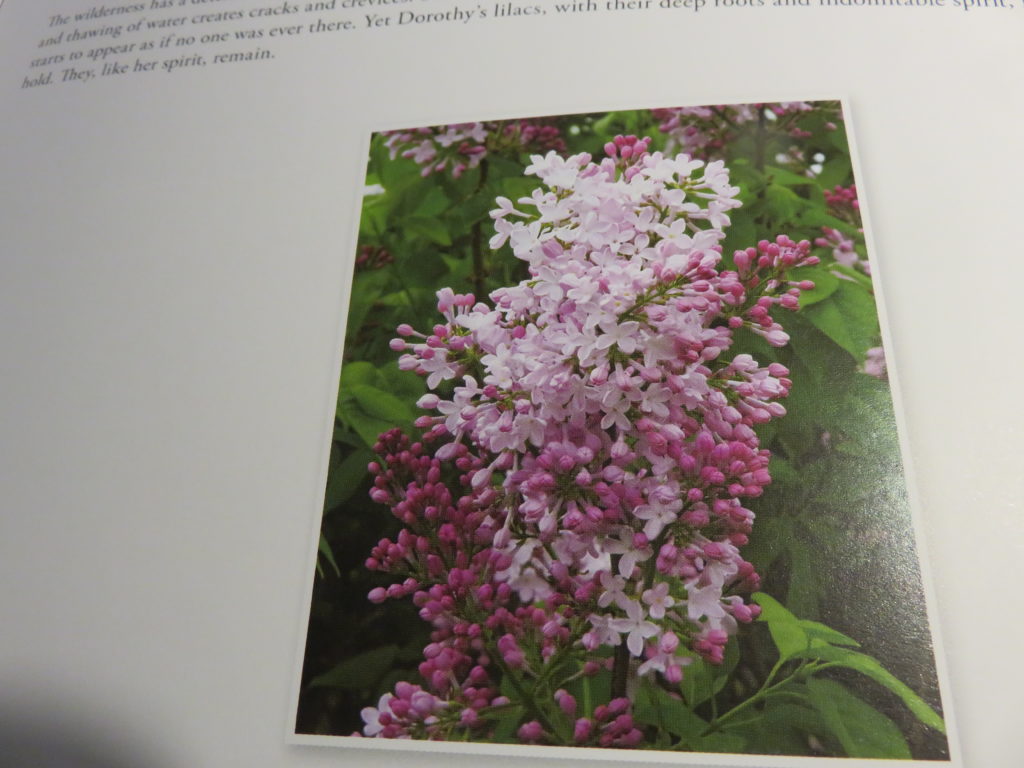
Dorothy lived for 56 years on the Isle of Pines on Knife Lake in the Boundary Waters. Her cabin was 15 miles and 5 portages from the nearest road. Many visitors came to see her as they trudged into the vast Boundary Waters. She welcomed everyone and served them her homemade root beer. She was the last legal resident of the Boundary Waters. Her life ended when found dead on the floor of her cabin in 1987. She never married saying that if she could ever find a man who could portage heavier loads, chop more wood, or catch more fish – then she would marry him. Apparently, no man ever met her criteria. She was a nurse and helped anyone who needed care. She was known as “The Nightingale of the North.” She planted lilacs and today, those lilacs bloom every spring.
More Photos of the Boundary Waters
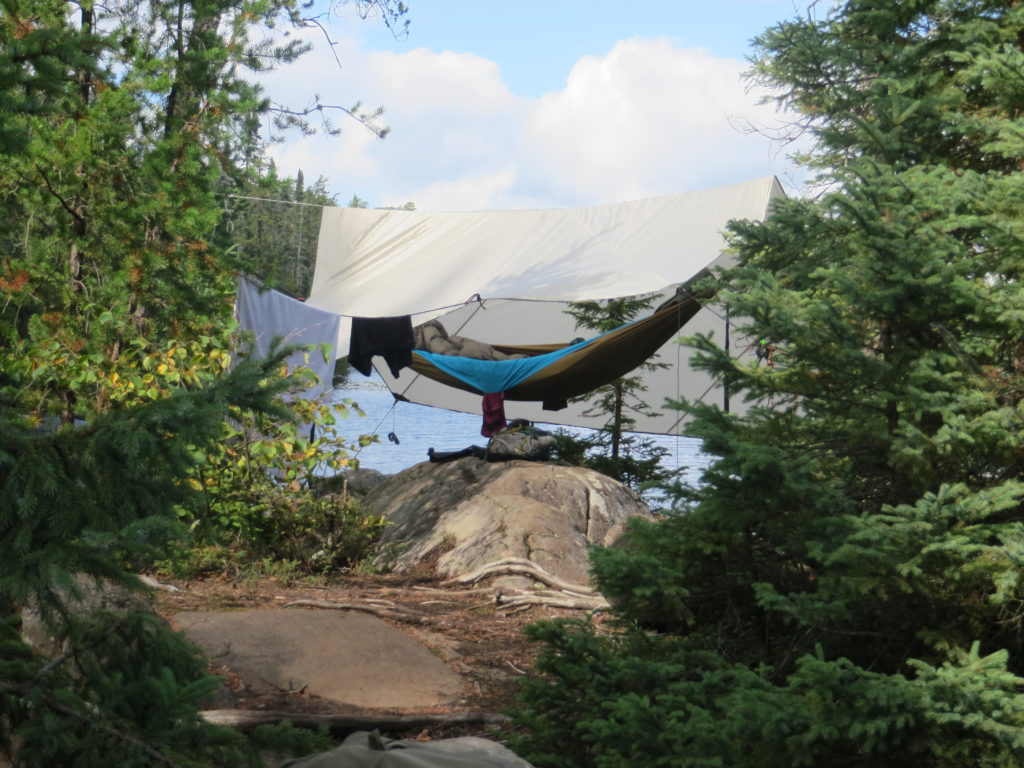
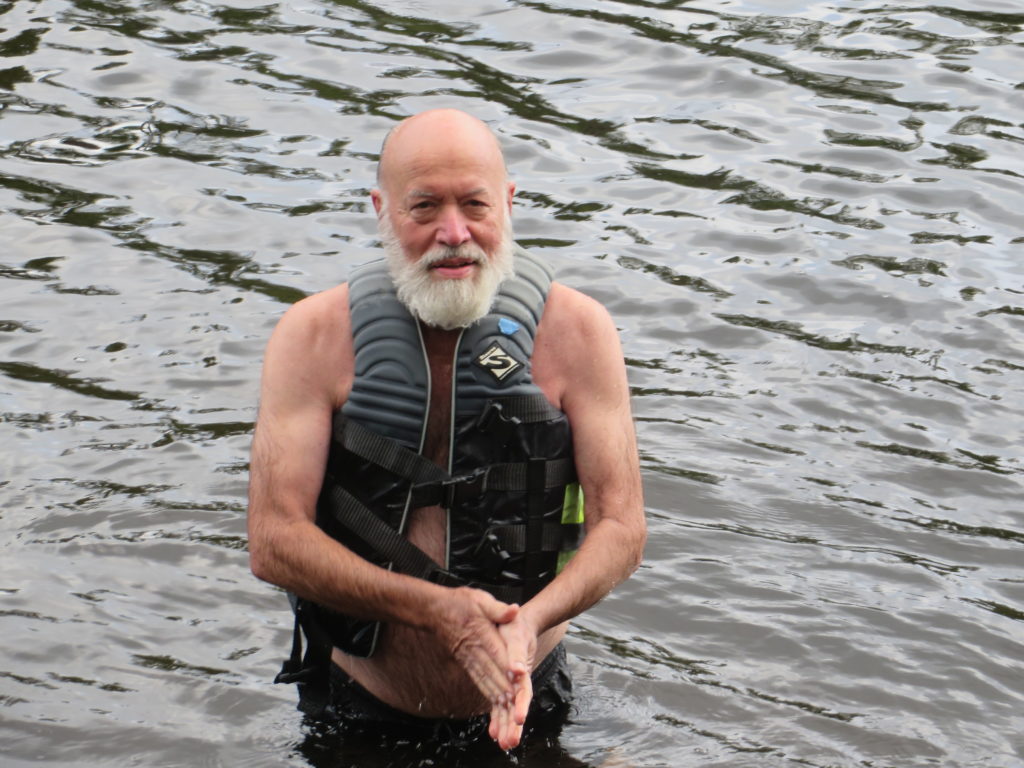


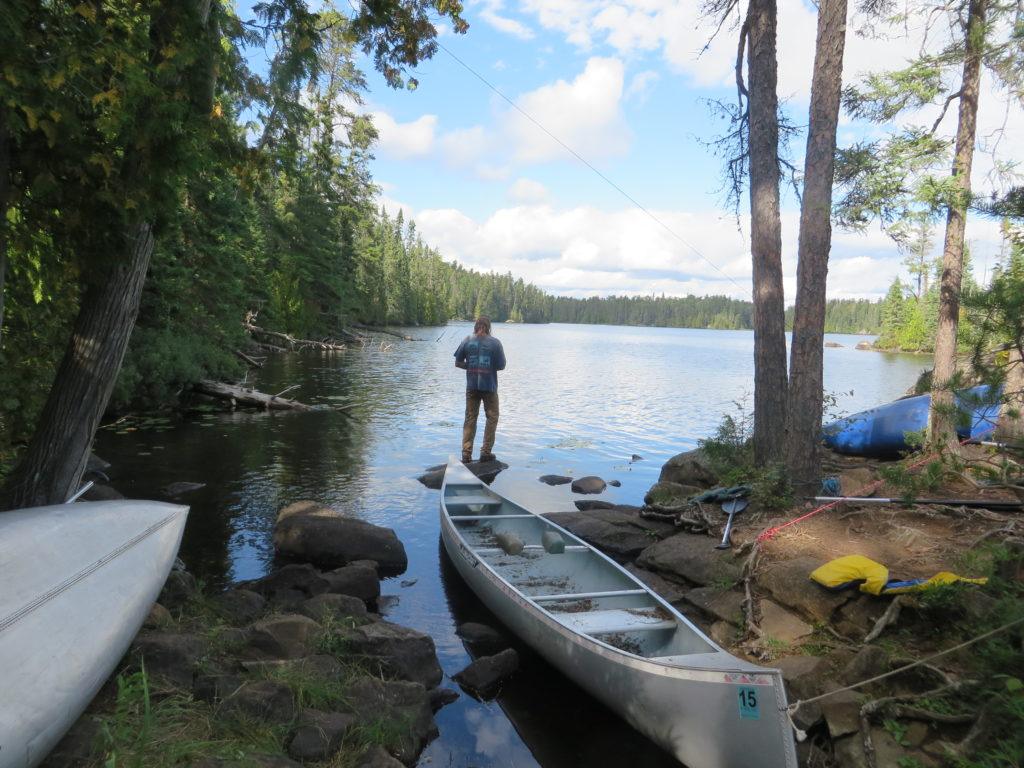

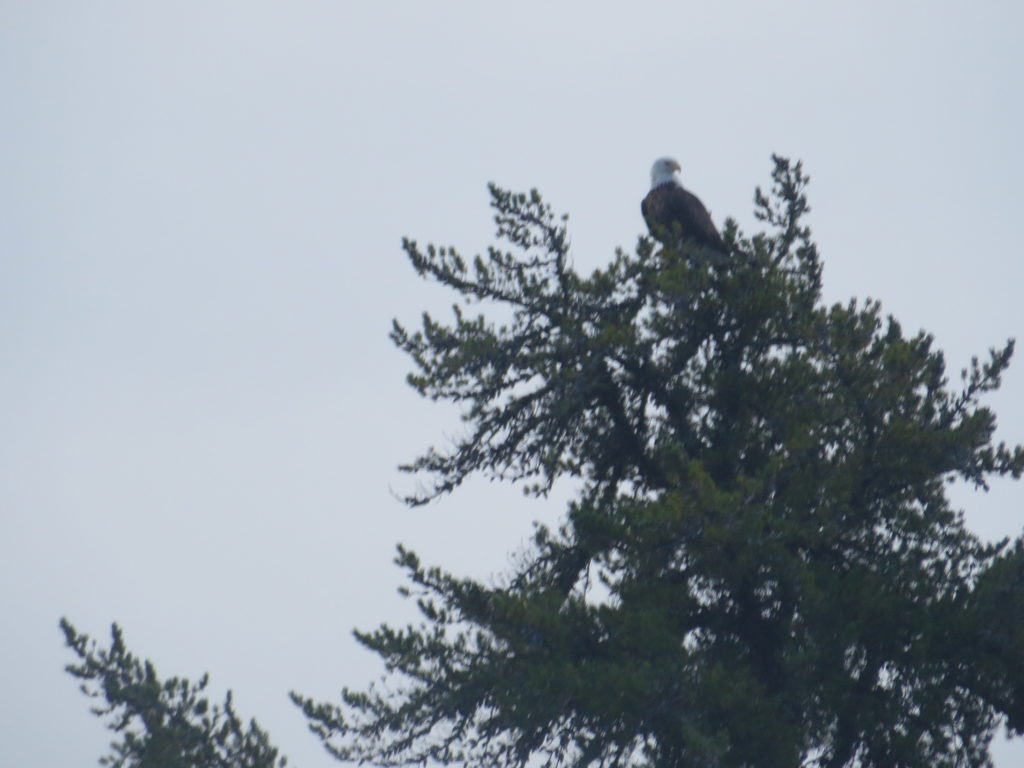

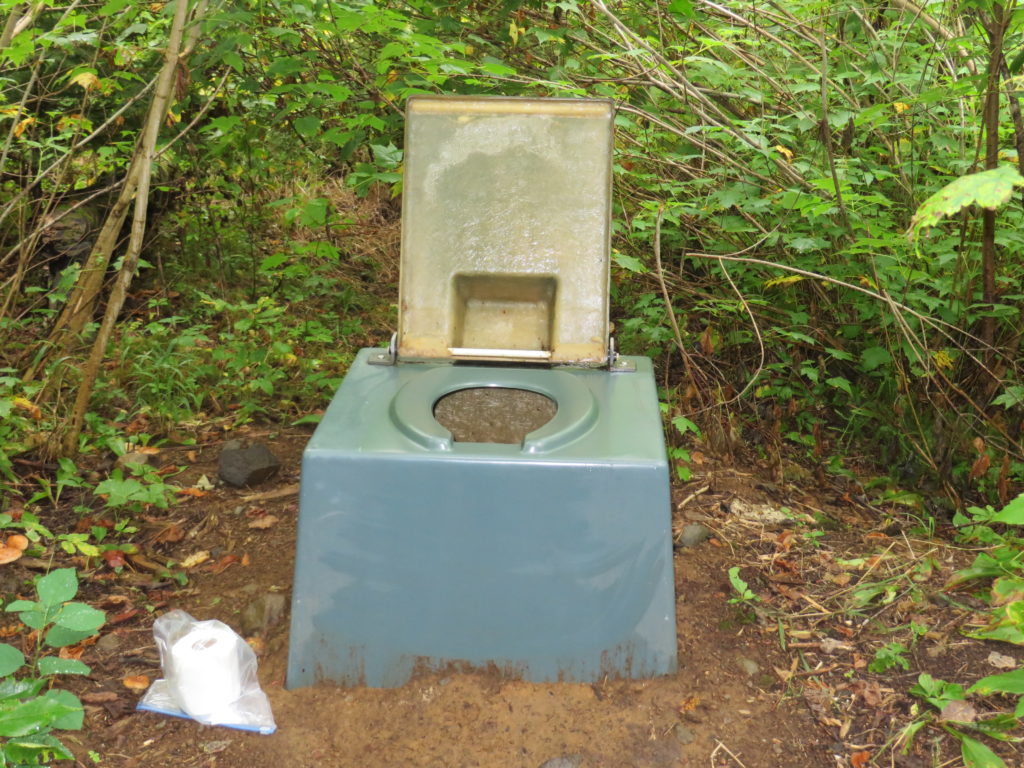

Thinking about the trees in the Boundary Waters reminds me of Alfred Kilmer’s poem. You will remember it, I am sure. …”Trees.” It is good to say the words again.
“I think that I shall never see a poem lovely as a tree. A tree whose hungry mouth is prest against the earth’s sweet flowing breast. A tree that looks at God all day, and lifts her leafy arms to pray. A tree that in summer wears a nest of robins in her hair. Upon whose bosom snow has lain; who intimately lives with rain. Poems are made by fools like me, but only God can make a tree.” Note: The word “prest” is as he spelled it. I might write it as “pressed.”
Kilmer was only 31 when he was killed in France while serving with the 165th Infantry on the Western Front. He did write other poems, but this one was the most famous and quoted poem in the English language.
We hope you have enjoyed our trip to the Boundary Waters in Minnesota. Until next time, take care of everyone you love and be kind to those you meet. It is a world filled with concern and confusion in which we now live. Pray and hope for better days ahead.
Anne & Phil